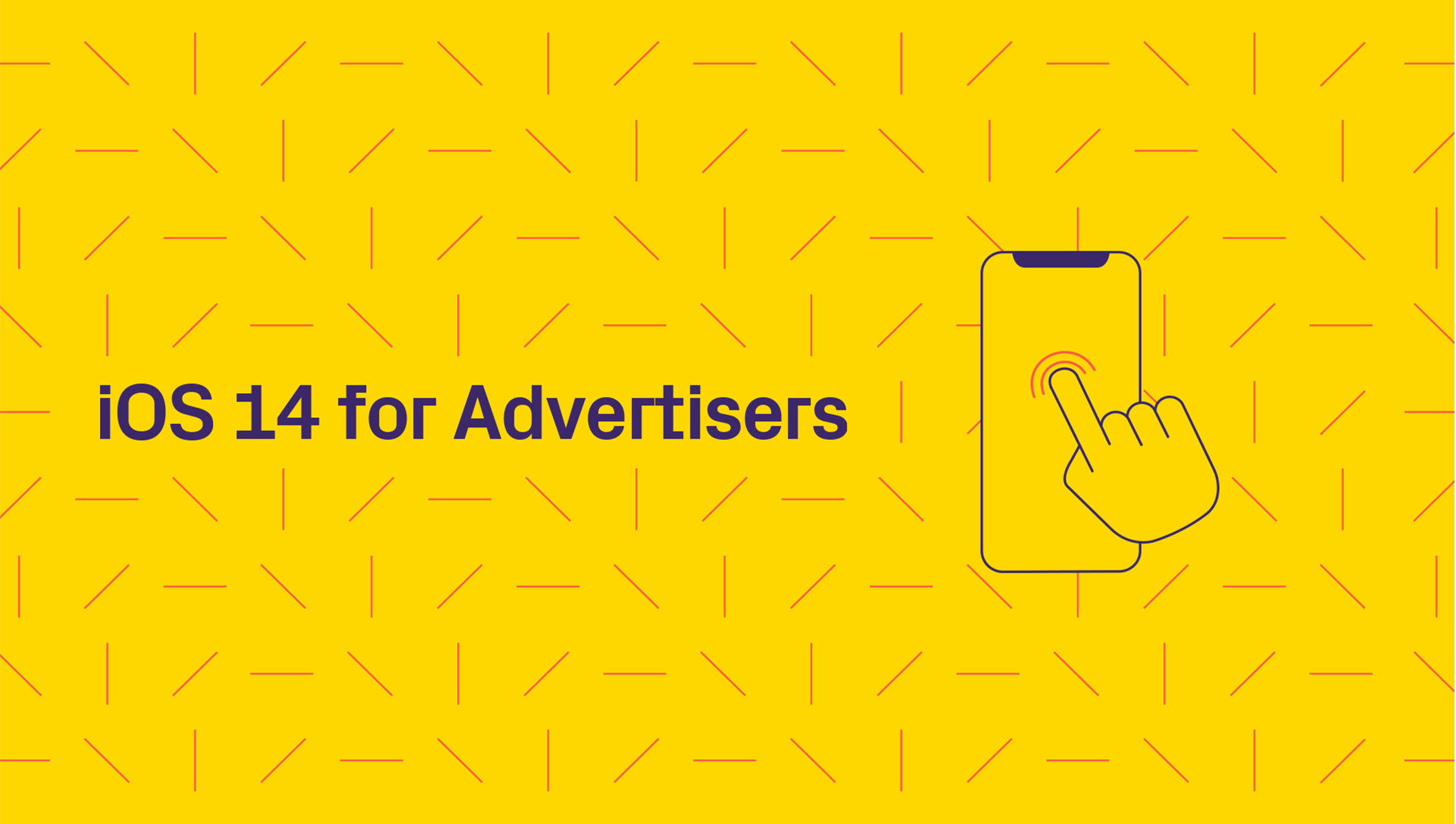Aug 27th 2020
Introduction to iOS 14 and SKAdNetwork: How This Affects Advertisers
In June 2020, Apple announced the latest update to their mobile operating system, iOS 14. Among the many enhancements this upgrade provides, iOS 14 will also bring changes to the mobile ad tech industry in early 2021. Most notably, Identifier for Advertisers (IDFA) will be default off, meaning that starting early next year, iOS 14 will require every app to get explicit permission from the user before tracking them or accessing their device’s advertising identifier. Also notable is that Apple has indicated that their SKAdNetwork will become a potential primary attribution solution if fingerprinting is truly disallowed. In essence, what this means is that Apple has decided to facilitate the attribution process at the operating system level to ensure that consumer privacy is protected to its standards. In doing so, Apple is eliminating most of the granularity that mobile marketers have come to expect in their data.
This blog on how iOS 14 will affect advertisers is the first in a series of articles that discuss how these changes also affect publishers, ad networks, and the overall ad tech ecosystem.
How should an advertiser prepare for iOS 14?
While the lack of clarity on some aspects of Apple policy can feel overly challenging for advertisers (and everyone in the ecosystem), there are a few knowns about the iOS 14 future that allows advertisers to prepare for the changes coming early next year. These are two key changes we do know:
- IDFA usage will require user consent. Advertisers should investigate all the ways they are leveraging the IDFA in their data pipelines today and adapt as necessary. Consider using an ID that is unique to the app that protects user privacy as it cannot be used to map to any other ID outside of the app. Also, this means that advertisers should look to implement the AppTrackingTransparency Framework to get consent from users and maximize the IDFA availability.
- Deterministic attribution will likely become obsolete and the future of fingerprinting is uncertain. Apple has been unclear on what they mean by banning fingerprint ID. With the possible scarcity of IDFA and fingerprinting’s uncertainty, it’s important for advertisers to understand their MMP’s approach as the privacy changes from Apple start to take place, while also preparing for a world where MMP attribution may not be accepted by Apple. This means advertisers should be thinking about and exploring an integration of SKAdNetwork.
What should an advertiser know if they were to consider SKAdNetwork for attribution?
If advertisers were to integrate and run campaigns on SKAdNetwork, there would be many changes to adapt to including ad operational aspects, data analysis, and bidding strategies.
From a technical perspective, advertisers will need to integrate the SKAdNetwork framework in their app. It involves making two different types of calls:
- Required: registerAppForAdNetworkAttribution method. This is a quick one line of code that generates the notification for the first install of the app.
- Optional: updateConversionValue method. This can be used to pass a value (0-63) for estimated user quality. Note: This is only available on iOS 14.
The optional Call of Conversion Value implementation is one that particularly needs to be set up with care. Not only is it the only proxy to user quality an advertiser/network can tie to campaign data, it will determine how delayed the install postback will be, due to the 24 hour timer that it triggers every time the conversion value is updated.
In addition, advertisers will need to work with network partners to understand the level of granularity they will be able to use in their data. Parameters are limited in the SKAdNetwork install postback making it challenging to know what time the install happened or what exact ad instance the install came from. The only flexibility in the parameters are with the campaign-id and the conversion-value parameters. Both of these have their own limitations but each will require collaboration from both parties to ensure an optimal setup.
In addition, how advertisers will consume and analyze the data will drastically differ from current practice. The way that SKAdNetwork is currently set up, the attribution data is only sent to the network; No data is sent to the advertiser, MMP, or other 3rd party servers. Therefore, advertisers will need to work with network partners to be able to access this data at the event level. Not only that but there will be no common identifier to tie the data together with existing MMP data and internal app data that may have previously relied on the IDFA or internal user ID. It will be a challenge for advertisers to measure true Return on Ad Spend (ROAS) and incremental uplift from the disparate data and will likely require UA teams to use statistical modeling to observe impact of their marketing investments.
See our other blogs in this series:
